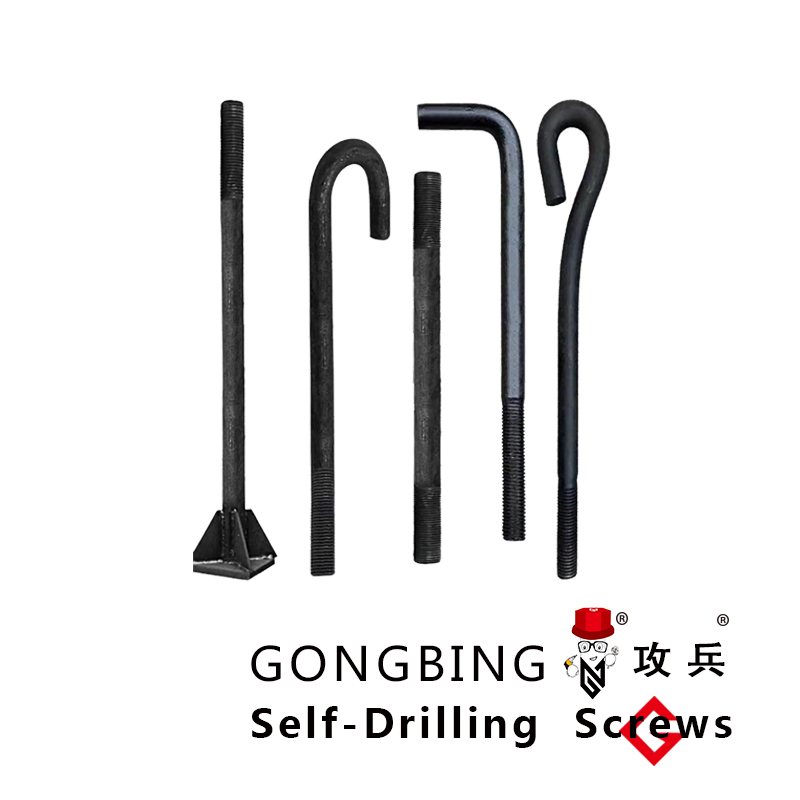shear stud dimensions
Understanding Shear Stud Dimensions Importance and Guidelines
Shear studs are crucial components in the construction of composite structures, particularly in steel-to-concrete connections. They facilitate the transfer of shear forces between the concrete and steel, ensuring structural integrity and performance. Understanding the dimensions and specifications of shear studs is essential for engineers and architects to ensure that these components meet the requisite load-bearing capacities and durability requirements.
What are Shear Studs?
Shear studs, often referred to as shear connectors, are typically welded onto steel beams before they are poured with concrete. Their primary function is to enhance the interaction between the concrete and steel, providing composite action that optimizes the structural performance of the system. When subjected to loads, shear studs help resist the forces that try to separate the concrete slab from the steel beam.
Dimensions of Shear Studs
The dimensions of shear studs can vary significantly based on design requirements and loading conditions. Typical shear studs come in various diameters, with common sizes ranging from 5/8 inch to 1 inch. The length of the shear studs is also crucial, usually varying between 4 to 14 inches, depending on the thickness of the concrete deck and the specific requirements of the project.
It is essential to consider the following factors when determining the dimensions of shear studs
shear stud dimensions

1. Load Requirements The shear studs must be designed to support the anticipated loads and shear forces that may occur during the structure's lifecycle. This includes dead loads, live loads, and environmental factors.
2. Concrete Thickness The thickness of the concrete slab directly influences the length of the shear studs. Longer studs are often required for thicker slabs to ensure proper anchorage and load transfer.
3. Welding Considerations The welding process used to attach shear studs to steel beams can also affect the dimensions. Adequate material thickness must be maintained to ensure a robust weld that can withstand operational stresses.
4. Material Properties The strength and type of materials used for shear studs are significant. Common materials include carbon steel and other alloys that provide enhanced tensile and shear strength.
5. Spacing and Arrangement The spacing of shear studs is another critical factor in their design. Proper spacing allows for effective load distribution and prevents localized failure of either the concrete or the steel. Standard practice often recommends spacing the studs between 12 to 24 inches apart, depending on the specific design requirements.
Conclusion
The importance of proper shear stud dimensions cannot be overstated in the context of composite construction. They play a fundamental role in ensuring that structures can resist shear forces and maintain their integrity under load. Engineers must take a comprehensive approach when designing and specifying shear studs, considering various factors such as load requirements, material properties, and construction methods. Careful attention to detail at this stage will result in robust, safe, and durable structures. By adhering to established guidelines and best practices, architects and engineers can achieve optimal performance from shear studs, ultimately contributing to the longevity and reliability of their projects.
-
Weatherproof Plastic Expansion Anchors for Outdoorព័ត៌មានJun.06,2025
-
Sustainability in the Supply Chain: Eco-Friendly TEK Screws Productionព័ត៌មានJun.06,2025
-
Load-Bearing Capacity of External Insulation Fixingsព័ត៌មានJun.06,2025
-
Double Head Bolts: Enhancing Efficiency in Industrial Machineryព័ត៌មានJun.06,2025
-
Corrosion Resistance in Chipboard Screws: Coatings for Wholesale Durabilityព័ត៌មានJun.06,2025
-
Butterfly Toggle Bolts : Enhancing Structural Resilienceព័ត៌មានJun.06,2025
